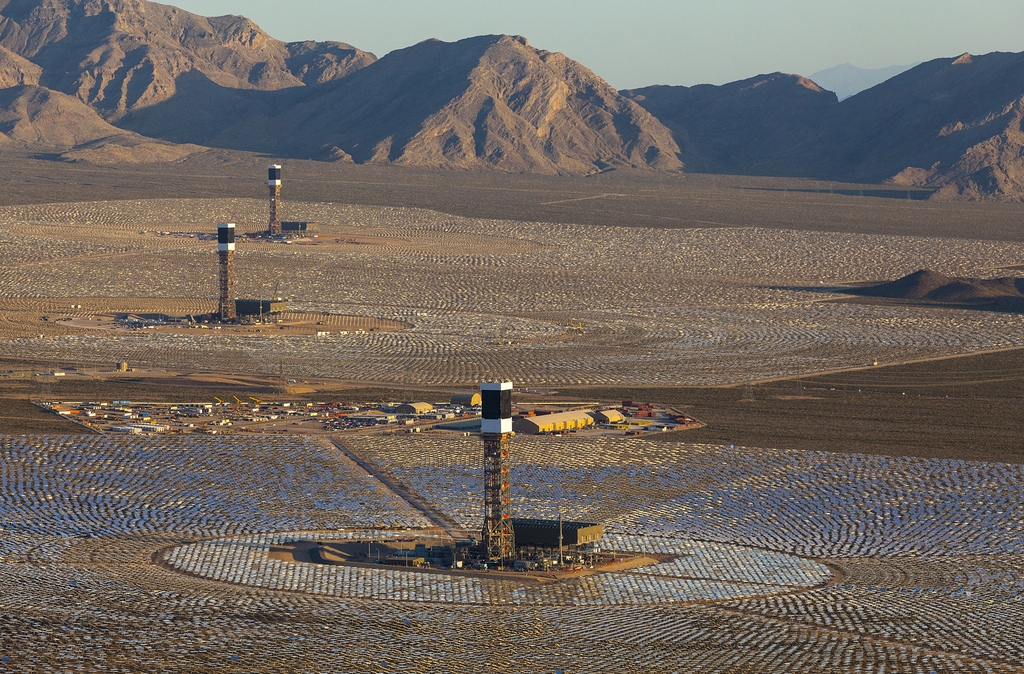
For the past few years, Greenpeace International has published major reports under the moniker Energy (R)evolution detailing ways to move the European Union to a renewable energy future–an approach that has gained considerable traction within the EU.
Now, Greenpeace has turned its attention to the U.S., with its release today of Energy (R)Evolution: A Sustainable Energy USA Outlook. A Greenpeace blog post with download links to the Executive Summary and two versions of the full report is here.
And a rather fun article on the report from CleanTechnica is here.
The goal of the report is to point the way to a clean energy future. In this case, the full report outlines steps that could and should be taken to achieve 97% of our electricity production by 2050 from clean energy. Nuclear power is not part of the picture; and for the most part neither is biomass. When Greenpeace says the goal is to phase out dirty, unsustainable energy sources, they mean it.
You can get the basic flavor of the Greenpeace report from the executive summary:
Avoiding the worst impacts of climate change requires a fundamental shift in the way we consume and generate energy. This shift should begin immediately and be well underway within the next ten years. The scale of the challenge requires a complete transformation of the way we produce, consume and distribute energy. Fortunately, we can meet this challenge while giving a boost to the economy, energy sector employment and energy security. The Energy (R)evolution provides a pathway for the US energy sector to reduce climate pollution and phase out dirty fuels, a pathway which comprises a very large piece of a global Energy (R)evolution analysis. The US pathway reduces territorial CO2 emissions 39% by 2025 (-27% under 1990), and 60% in 2030 (-48% under 1990).
The five key principles behind this Energy [R]evolution will be to:
• Implement renewable solutions, especially through decentralized energy systems and grid expansions
• Respect the natural limits of the environment
• Phase out dirty, unsustainable energy sources
• Create greater equity in the use of resources
• Decouple economic growth from the consumption of fossil fuels
The reference scenario for this report is the 2013 Annual Energy Outlook, published by the US Energy Information Agency (EIA), which uses a 2011 base year. Renewable energy sources accounted for 6.6% of primary energy demand in 2011. The main sources were biomass, mostly used for heating, and hydro and wind which are used for power generation. For electricity generation, renewables contributed about 13%. For heat supply renewables contributed around 10%, the majority from biomass but increasingly also from solar thermal collectors and to some degree from geothermal heat pumps. About 93% of primary energy supply was from fossil fuels.
Decentralized energy systems, where power and heat are produced close to the point of final use will avoid the current energy waste in distribution. The Energy [R]evolution requires investments in ‘climate infrastructure’ such as smart interactive grids and super grids to transport large quantities of offshore wind and concentrating solar power.
People can, and will, pick at some of Greenpeace’s assumptions and scenarios. But it is an important addition to the growing literature of how we can move to a clean energy future, much of which can be found on NIRS’ website here. Perhaps the most important point is that whether we can achieve a clean energy future is not in doubt, the only remaining issues are what exactly that future will look like and, most importantly, how do we quickly expand our movement to gain the political momentum to set the necessary policies in place.
Michael Mariotte
May 14, 2014
Permalink: https://www.nirs.org/2014/05/14/greenpeace-energy-revolution/
You can now support GreenWorld with your tax-deductible contribution on our new donation page here. PayPal now accepted. We gratefully appreciate every donation of any size–your support is what makes our work possible.
Comments are welcome on all GreenWorld posts! Say your piece above. Start a discussion. Don’t be shy; this blog is for you.
If you like GreenWorld, you can help us reach more people. Just use the icons below to “like” our posts and to share them on the various social networking sites you use. And if you don’t like GreenWorld, please let us know that too. Send an e-mail with your comments/complaints/compliments to nirs@nirs.org. Thank you!
Note: If you’d like to receive GreenWorld via e-mail daily, send your name and e-mail address to nirs@nirs.org and we’ll send you an invitation. Note that the invitation will come from a GreenWorld@wordpress.com address and not a nirs.org address, so watch for it.



